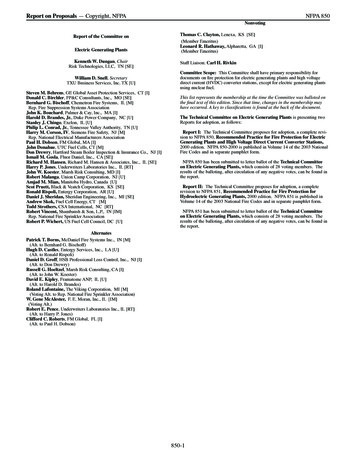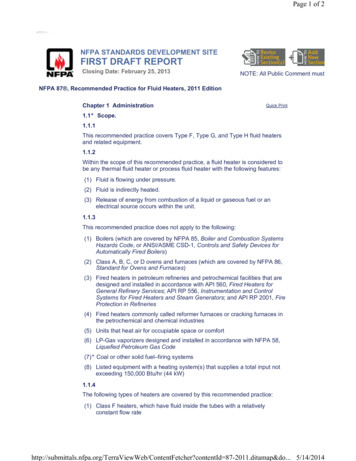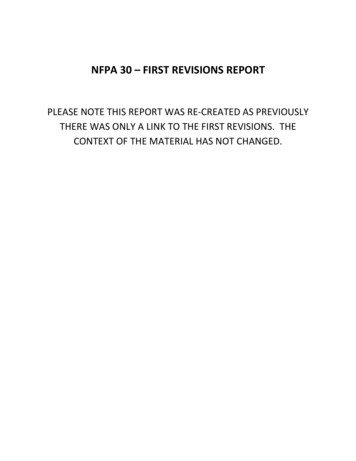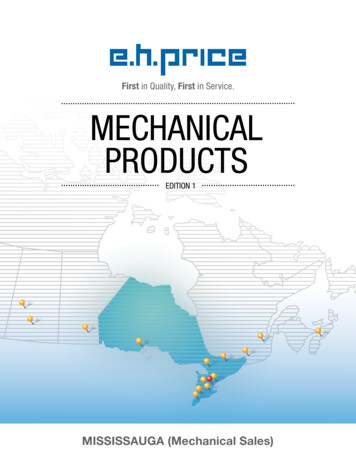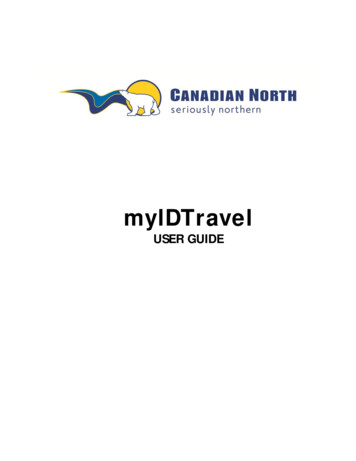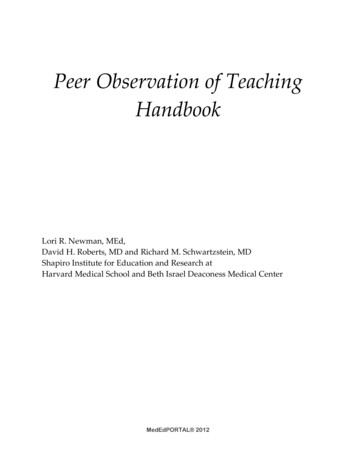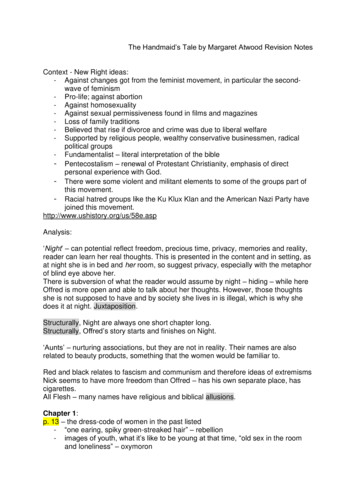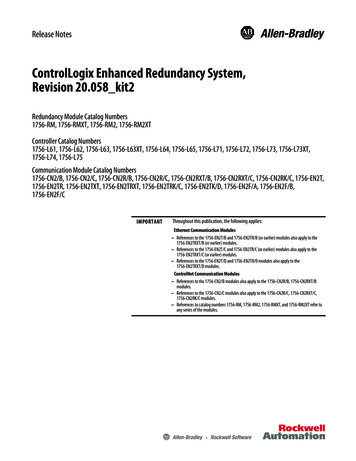![First Revision No. 2-NFPA 33-2016 [ Section No. 1.3 ]](/img/4/33-f2017-faa-aaa-frreport.jpg)
Transcription
National Fire Protection Association entFetcher?commentPara.First Revision No. 2-NFPA 33-2016 [ Section No. 1.3 ]1.3 Application.Chapter 4 through Chapter 10 and Chapter 19 shall apply to all spray application processes within thescope of this standard. Chapter 11 and Chapter 12 shall apply only to electrostatic spray applicationprocesses. Chapter 13 shall apply only to drying, curing, and fusion processes and operations. Chapter14 shall apply only to miscellaneous spray operations. Chapter 15 shall apply only to powder coatingapplication processes and operations. Chapter 16 and Chapter 17 shall apply only to multicomponentcoating systems and to processes that involve the use of catalysts, such as organic peroxide formulations.Chapter 18 shall apply only to spray application processes or operations that are conducted in temporarymembrane enclosures both inside and outside buildings and structures.Submitter Information VerificationSubmitter Full Name: Nancy PearceOrganization:[ Not Specified ]Street Address:City:State:Zip:Submittal Date:Tue Feb 23 10:41:54 EST 2016Committee StatementCommitteeStatement:This informs the reader that the standard is applicable to both inside and outsidemembrane enclosures.Response Message:Public Input No. 75-NFPA 33-2016 [Section No. 1.3]Public Input No. 45-NFPA 33-2015 [Section No. 1.3]1 of 655/18/2016 9:10 AM
National Fire Protection Association entFetcher?commentPara.First Revision No. 16-NFPA 33-2016 [ Section No. 2.3 ]2.3 Other Publications.2.3.1 ASME Publications.American Society of Mechanical Engineers, Two Park Avenue, New York, NY 10016-5990.Boiler and Pressure Vessel Code, Section VIII, 2013 2015 .2.3.2 ASTM Publications.ASTM International, 100 Barr Harbor Drive, P.O. Box C700, West Conshohocken, PA 19428-2959.ASTM D5/D5M , Standard Test Method for Penetration of Bituminous Materials, 2013.ASTM D56, Standard Test Method for Flash Point by Tag Closed Cup Tester , 2010.ASTM D93, Standard Test Methods for Flash Point by Pensky-Martens Closed Cup Tester , 2015a.ASTM D323, Standard Test Method for Vapor Pressure of Petroleum Products (Reid Method),2008 2015a .ASTM D3278, Standard Test Methods for Flash Point of Liquids by Small Scale Closed-Cup Apparatus ,2011.ASTM D3828, Standard Test Methods for Flash Point by Small Scale Closed Cup Tester , 2012a.ASTM D4359, Standard Test Method for Determining Whether a Material is a Liquid or a Solid, 2012.ASTM E84, Standard Test Method for Surface Burning Characteristics of Building Materials , 2015b.ASTM E136, Standard Test Method for Behavior of Materials in a Vertical Tube Furnace at750 C,2012 2016 .ASTM E2652, Standard Test Method for Behavior of Materials in a Tube Furnace with a Cone-shapedAirflow Stabilizer, at 750 C, 2015.2.3.3 UL Publications.Underwriters Laboratories Inc., 333 Pfingsten Road, Northbrook, IL 60062-2096.ANSI/UL 340, Standard for Tests for Comparative Flammability of Liquids, 2009, revised 2014.ANSI/UL 723, Standard for Test for Surface Burning Characteristics of Building Materials , 2008.ANSI/UL 900, Standard for Air Filter Units, 2004, revised 2012 2015 .ANSI/UL 2208, Standard for Solvent Distillation Units, 2010, revised 2011 2015 .2.3.4 Additional Publications.Merriam-Webster's Collegiate Dictionary, 11th edition, Merriam-Webster, Inc., Springfield, MA, 2003.Submitter Information VerificationSubmitter Full Name: Nancy PearceOrganization:[ Not Specified ]Street Address:City:State:Zip:Submittal Date:Tue Feb 23 23:05:09 EST 2016Committee Statement2 of 655/18/2016 9:10 AM
National Fire Protection Association ed publications have been updated to the latest edition years. ASTM E84, ASTME2652 and ANSI/ UL 723 were added to references since those test methods are now referencedin the standard.ResponseMessage:Public Input No. 46-NFPA 33-2016 [Section No. 2.3.2]Public Input No. 117-NFPA 33-2016 [Section No. 2.4]Public Input No. 101-NFPA 33-2016 [Section No. 2.3.3]Public Input No. 15-NFPA 33-2015 [Section No. 2.3]Public Input No. 100-NFPA 33-2016 [Section No. 2.3.2]3 of 655/18/2016 9:10 AM
National Fire Protection Association entFetcher?commentPara.First Revision No. 55-NFPA 33-2016 [ Section No. 2.4 ]2.4 References for Extracts in Mandatory Sections.NFPA 30, Flammable and Combustible Liquids Code, 2015 edition.NFPA 56, Standard for Fire and Explosion Prevention During Cleaning and Purging of Flammable GasPiping Systems, 2014 2017 edition.NFPA 69, Standard on Explosion Prevention Systems, 2014 edition.NFPA 70 , National Electrical Code , 2014 2017 edition.NFPA 5000 , Building Construction and Safety Code , 2018 edition.Submitter Information VerificationSubmitter Full Name: Nancy PearceOrganization:National Fire Protection AssocStreet Address:City:State:Zip:Submittal Date:Thu Apr 14 21:57:07 EDT 2016Committee StatementCommittee Statement: Updated to current editions and added new referenceResponse Message:4 of 655/18/2016 9:10 AM
National Fire Protection Association entFetcher?commentPara.First Revision No. 45-NFPA 33-2016 [ New Section after 3.3.2 ]3.3.3Basement.For the purposes of this standard, a story of a building or structure having one-half or more of its heightbelow ground level and to which access for fire-fighting purposes is restricted. [ 30, 2015]Submitter Information VerificationSubmitter Full Name: Nancy PearceOrganization:[ Not Specified ]Street Address:City:State:Zip:Submittal Date:Mon Mar 07 19:50:27 EST 2016Committee StatementCommitteeStatement:The definition was extracted from NFPA 30 instead of NFPA 101 and NFPA 5000 since NFPA 33sreference to basements is related to the same hazard as in NFPA 30 (flammable and combustiblevapors). NFPA 33 already references NFPA 101 requirements for life safety.ResponseMessage:Public Input No. 71-NFPA 33-2016 [New Section after 3.3.3]5 of 655/18/2016 9:10 AM
National Fire Protection Association entFetcher?commentPara.First Revision No. 3-NFPA 33-2016 [ Section No. 3.3.2.3 [Excluding any Sub-Sections] ]Any fully enclosed, partly enclosed, or unenclosed area in which dangerous quantities of flammable orcombustible vapors, mists, residues, dusts, or deposits are present due to the operation of sprayprocesses, including (1) any area in the direct path of a spray application process; (2) the interior of aspray booth, spray room, or limited finishing workstation, as herein defined; (3) the interior of any exhaustplenum, eliminator section, or scrubber section; (4) the interior of any exhaust duct or exhaust stackleading from a spray application process; (5) the interior of any air recirculation path up to and includingrecirculation particulate filters; (6) any solvent concentrator (pollution abatement) unit or solvent recovery(distillation) unit; and (7) the inside of a membrane enclosure. The following are not part of the spray area:(1) fresh air make-up units; (2) air supply ducts and air supply plenums; (3) recirculation air supply ductsdownstream of recirculation particulate filters; and (4) exhaust ducts from solvent concentrator (pollutionabatement) units.Supplemental InformationFile NameDescriptionA3.3.2.3.docxSubmitter Information VerificationSubmitter Full Name: Nancy PearceOrganization:[ Not Specified ]Street Address:City:State:Zip:Submittal Date:Tue Feb 23 11:16:39 EST 2016Committee StatementCommitteeStatement:The Committee agreed to remove dangerous since it is an unenforceable term. However they leftthe clarifications on what is not part of the spray area since this is commonly used by enforcers anddocument users to clarify what a spray area includes. Annex material was added to further clarifythe definition of a spray area.Public Input No. 84-NFPA 33-2016 [Section No. 3.3.2.3 [Excluding any Sub-Sections]]Public Input No. 85-NFPA 33-2016 [Section No. A.3.3.2.3]6 of 655/18/2016 9:10 AM
National Fire Protection Association entFetcher?commentPara.First Revision No. 35-NFPA 33-2016 [ Sections 3.3.9, 3.3.10, 3.3.11 ]3.3.10 Limited Combustible.A building construction material not complying with the definition of noncombustible material that, in theform in which it is used, has a potential heat value not exceeding 8140 kJ/kg (3500 Btu/lb), where testedin accordance with NFPA 259 and complies with (a) or (b): (a) materials having a structural base ofnoncombustible material, with a surfacing not exceeding a thickness of 3 mm ( 1 8 in.) that has a flamespread index not greater than 50; and (b) materials, in the form and thickness used, other than asdescribed in (a), having neither a flame spread index greater than 25 nor evidence of continuedprogressive combustion and of such composition that surfaces that would be exposed by cutting throughthe material on any plane would have neither a flame spread index greater than 25 nor evidence ofcontinued progressive combustion. (Materials subject to increase in combustibility or flame spread indexbeyond the limits herein established through the effects of age, moisture, or other atmospheric conditionshall be considered combustible.) See Section 4.5 .3.3.11 Liquid.Any material that (1) has a fluidity greater than that of 300 penetration asphalt when tested in accordancewith ASTM D5/D5M , Standard Method of Test for Penetration of Bituminous Materials, or (2) is a viscoussubstance for which a specific melting point cannot be determined but that is determined to be a liquid inaccordance with ASTM D4359, Standard Test Method for Determining Whether a Material is a Liquid or aSolid. [30, 2012 2015 ]3.3.11.1 Combustible Liquid.Any liquid that has a closed-cup flash point at or above 37.8 C (100 F), as determined by the testprocedures and apparatus set forth in NFPA 30. Combustible liquids are classified in accordance with thefollowing: (1) Class II Liquid — Any liquid that has a flash point at or above 37.8 C (100 F) and below60 C (140 F); (2) Class III Liquid — Any liquid that has a flash point at or above 60 C (140 F); (a) ClassIIIA Liquid — Any liquid that has a flash point at or above 60 C (140 F), but below 93 C (200 F); (b) ClassIIIB Liquid — Any liquid that has a flash point at or above 93 C (200 F) Section 4.7 . Combustible liquidsare classified [ 30, 2015] according to Section 4.6 . [ 30, 2015]3.3.11.2 Flammable Liquid.Any liquid that has a closed-cup flash point below 37.8 C (100 F), as determined by the test proceduresand apparatus set forthin in NFPA 30 forth in Section 4.7 , and a Reid vapor pressure that does notexceed an absolute pressure of 276 kPa (40 psi) at 37.8 C (100 F), as determined by ASTM D323,Standard Test Method for Vapor Pressure of Petroleum Products (Reid Method). Flammable liquids areclassified as Class I liquids and further subclassified in accordance with the following: (1) Class IA Liquid— Any liquid that has a flash point below 22.8 C (73 F) and boiling point below 37.8 C (100 F); (2) ClassIB Liquid — Any liquid that has a flash point below 22.8 C (73 F) and boiling point at or above 37.8 C(100 F); (3) Class IC Liquid — Any liquid that has a flash point at or above 22.8 C (73 F), but below37.8 C (100 F) according to Section 4.6 . [30, 2015]3.3.12 Material.3.3.12.1 Flammable or Combustible Material.Any material, including its residue, that is used in the spray application process and also meets one of thefollowing definitions, as given elsewhere in this section: (1) Flammable Liquid, (2) Combustible Liquid, (3)Combustible Powder. the definition of a combustible liquid (see 3.3.11.1 ) , a flammable liquid (see3.3.11.2 ) , or a combustible powder (see 3.3.5 ) .3.3.12.2 Limited-Combustible Material.See 4.5.7 of 655/18/2016 9:10 AM
National Fire Protection Association entFetcher?commentPara.3.3.12.3 Noncombustible Material.A material that, in the form in which it is used and under the conditions anticipated, will not ignite, burn,support combustion, or release flammable vapors when subjected to fire or heat. Materials that arereported as passing ASTM E136, Standard Test Method for Behavior of Materials in a Vertical TubeFurnace at 750 C , are considered noncombustible materials. See Section 4.4 .Submitter Information VerificationSubmitter Full Name: Nancy PearceOrganization:[ Not Specified ]Street Address:City:State:Zip:Submittal Date:Thu Feb 25 08:37:13 EST 2016Committee StatementCommitteeStatement:The changes made are consistent with other NFPA documents placing noncombustible material,limited combustible material, classification of liquids and determination of flash points in a GeneralRequirements section. Changes to definitions are consistent with NFPA 1, NFPA 30 and NFPA5000.ResponseMessage:Public Input No. 109-NFPA 33-2016 [Section No. 3.3.9]Public Input No. 110-NFPA 33-2016 [Section No. 3.3.11.2]Public Input No. 98-NFPA 33-2016 [Section No. 3.3.9]Public Input No. 99-NFPA 33-2016 [Section No. 3.3.11.2]8 of 655/18/2016 9:10 AM
National Fire Protection Association entFetcher?commentPara.First Revision No. 6-NFPA 33-2016 [ Sections 3.3.18.1, 3.3.18.2 ]3.3.19.1* Limited Finishing Workstation.An apparatus that is capable of confining the vapors, mists, residues, dusts, or deposits that aregenerated by a spray application process and that meets the requirements of Section 14.3 , but does notmeet the requirements of a spray booth or spray room, as herein defined. A power-ventilated apparatusthat is capable of confining the vapors, mists, residues, dusts, or deposits that are generated by a limitedspray application process. A limited finishing workstation is not a spray booth o
First Revision No. 3-NFPA 33-2016 [ Section No. 3.3.2.3 [Excluding any Sub-Sections] ] Any fully enclosed, partly enclosed, or unenclosed area in which dangerous quantities of flammable or combustible vapors, mists, residues, dusts, or deposits are present due to the operation of spray processes, including (1) any area in the direct path of a spray application process; (2) the interior of a .
![First Revision No. 147-NFPA 20-2013 [ Global Input ]](/img/4/20-a15-fim-aaa-fd-frstatements.jpg)
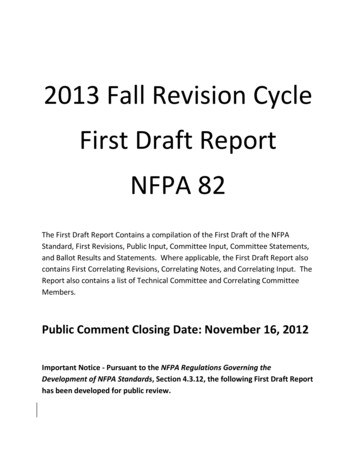
![First Revision No. 3-NFPA 497-2014 [ Chapter 2 ]](/img/5/497-a2016-eec-aaa-fd-frstatments.jpg)
